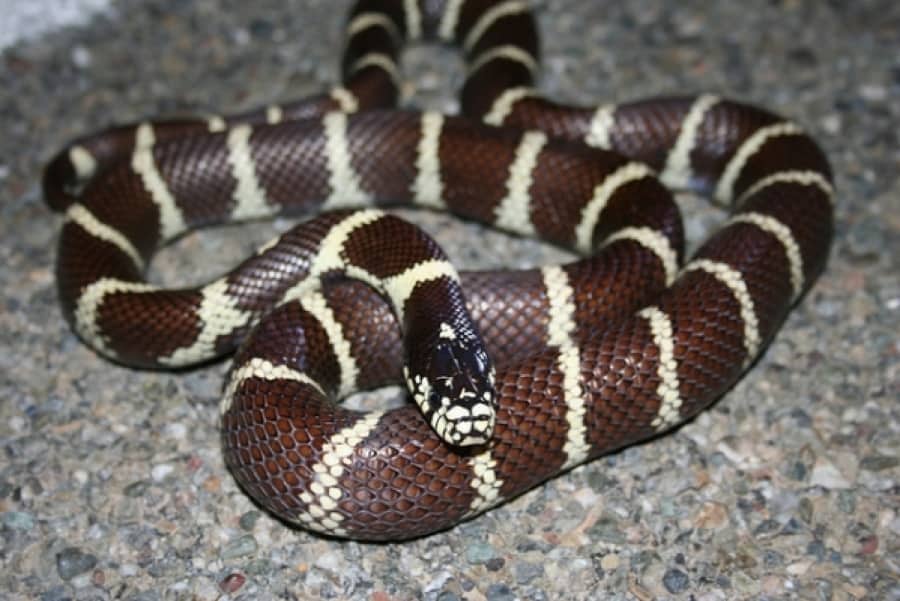
Scientific Name
- The scientific name of this snake is Lampropeltis getulus californiae.
Description
- They vary in colors, but the most commonly found colors are in black and white stripes.
- They have black eyes.
- The snakes shed 4 to 6 times annually.
- The humid environment may greatly help the kingsnake in shedding.
- Handling of snakes during the shedding should be avoided or reduced as much as possible to minimize the chances of hurting the snake while the skin is vulnerable.
- The California kingsnakes are nocturnal animals.
- This snake is commonly adopted as a pet.
Distribution
- East coast of North America from Ohio to Florida.
Breeding
- In the wild, mating takes place from March to June.
- Eggs are laid from May to August.
Nesting
- There are around 15 eggs per clutch.
- Eggs hatch 6 to 10 weeks later.
Size
- Adults may reach 5 feet long.
- The baby kingsnakes are about 8 to 12 inches long.
Life Span
- The California Kingsnake may live up to 15 to 20 years.
Diet
- It is named kingsnake as it eats snakes, including venomous snakes.
- Other foods are rodents, mice, rats, frogs, or lizards.
- Hatchling should be fed with newly born mice at the frequency of 5 to 7 days.
- A small dish of water should be provided.
Habitat
- They originate from the desert.
- Living in different habitats such as woodland, chaparral farmland, grassland, deciduous, forest, or river bank.
Common Disease
- Respiratory problems may result due to improper control of humidity, especially if the habitat is highly humid.
